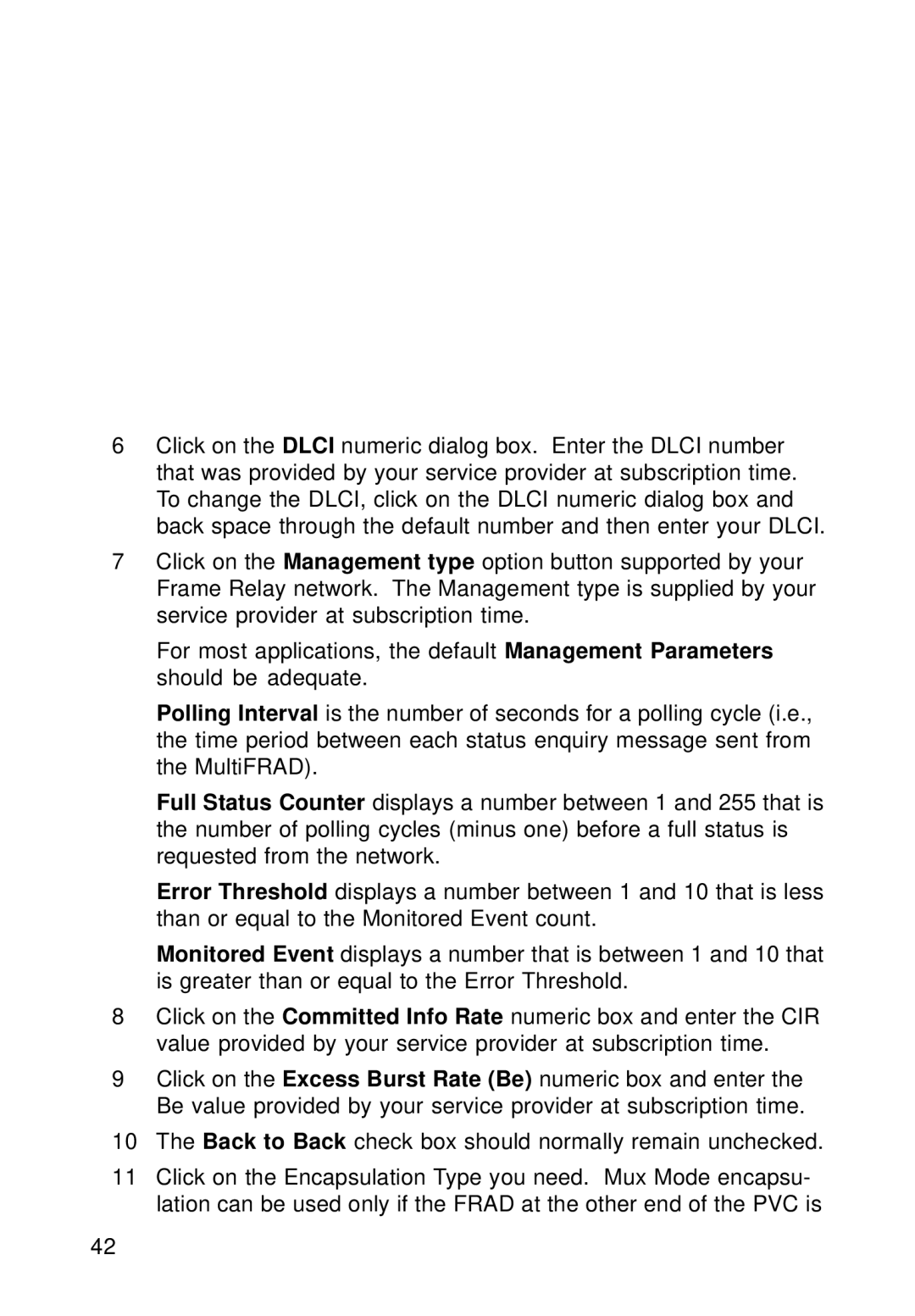
6Click on the DLCI numeric dialog box. Enter the DLCI number that was provided by your service provider at subscription time. To change the DLCI, click on the DLCI numeric dialog box and back space through the default number and then enter your DLCI.
7Click on the Management type option button supported by your Frame Relay network. The Management type is supplied by your service provider at subscription time.
For most applications, the default Management Parameters should be adequate.
Polling Interval is the number of seconds for a polling cycle (i.e., the time period between each status enquiry message sent from the MultiFRAD).
Full Status Counter displays a number between 1 and 255 that is the number of polling cycles (minus one) before a full status is requested from the network.
Error Threshold displays a number between 1 and 10 that is less than or equal to the Monitored Event count.
Monitored Event displays a number that is between 1 and 10 that is greater than or equal to the Error Threshold.
8Click on the Committed Info Rate numeric box and enter the CIR value provided by your service provider at subscription time.
9Click on the Excess Burst Rate (Be) numeric box and enter the Be value provided by your service provider at subscription time.
10The Back to Back check box should normally remain unchecked.
11Click on the Encapsulation Type you need. Mux Mode encapsu- lation can be used only if the FRAD at the other end of the PVC is
42
